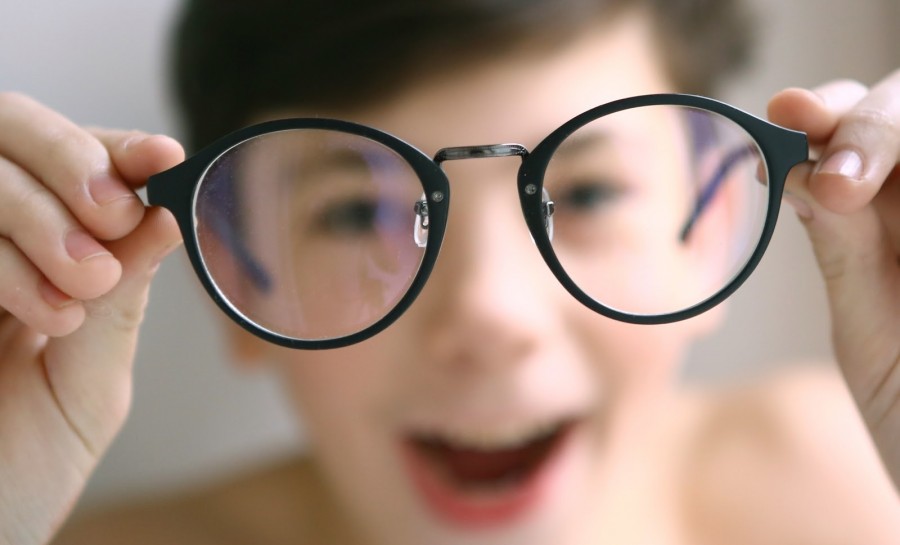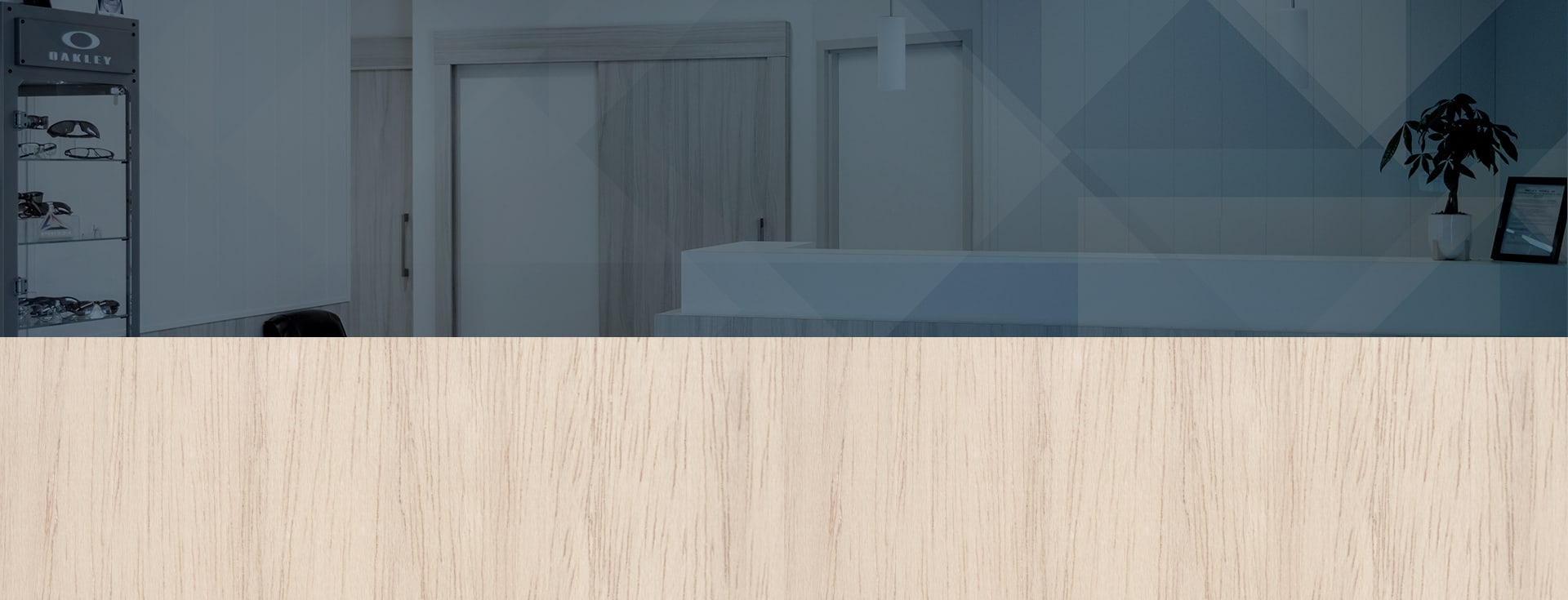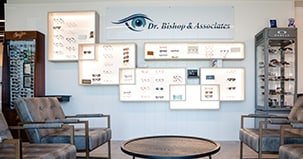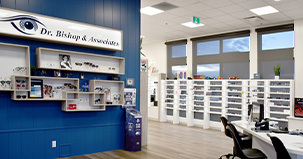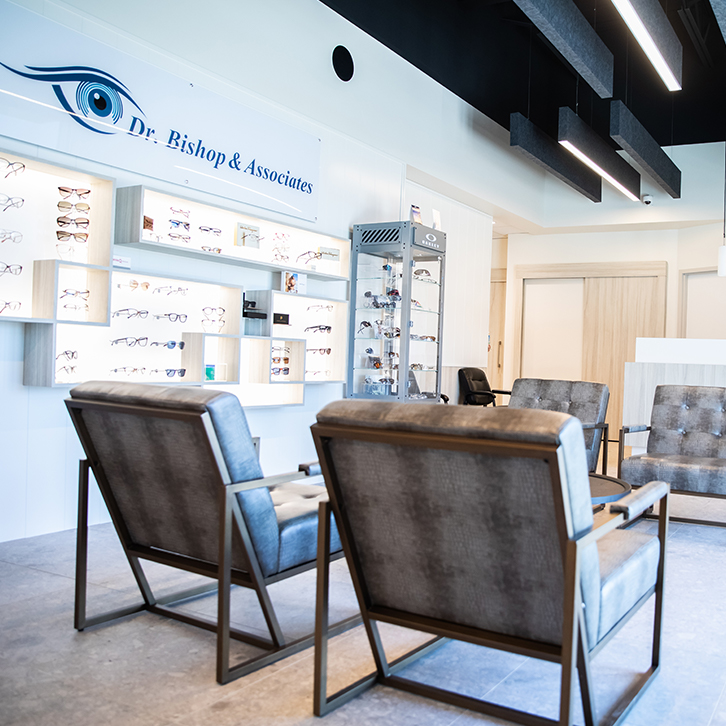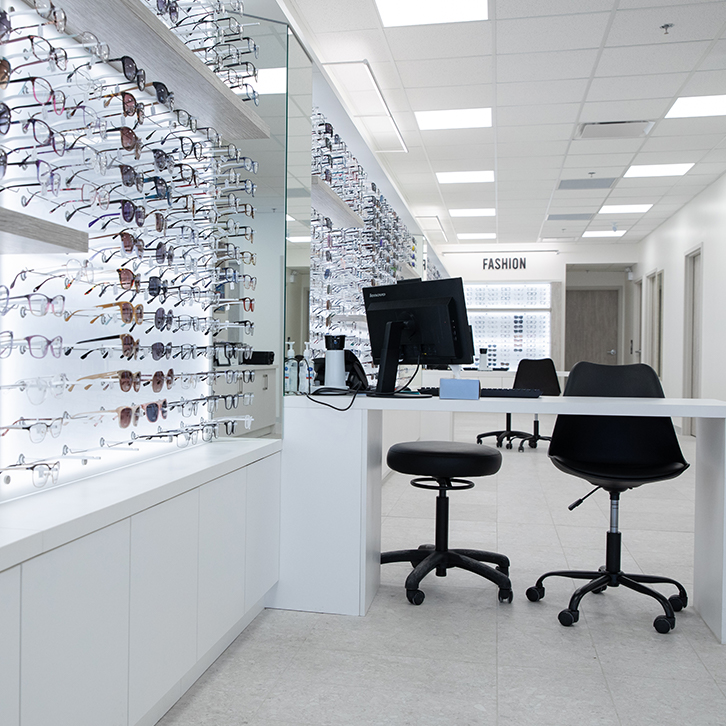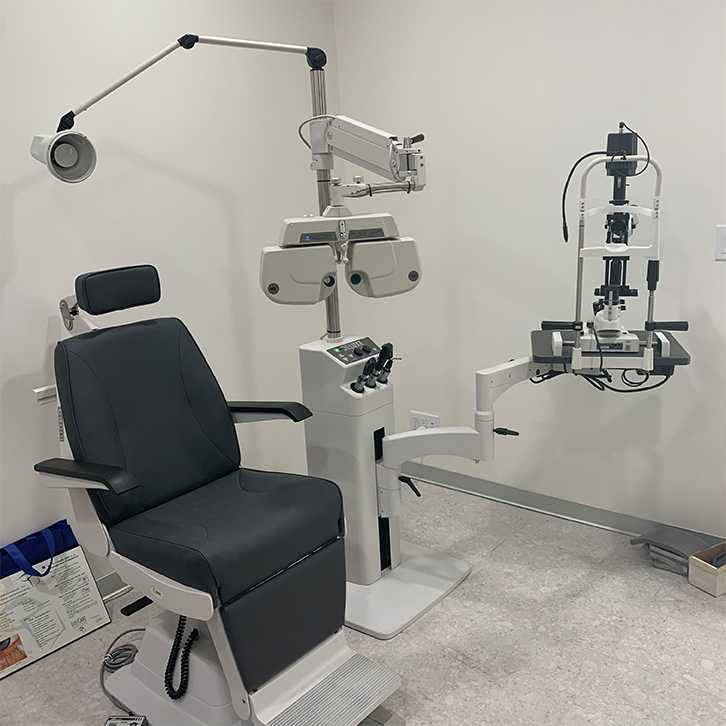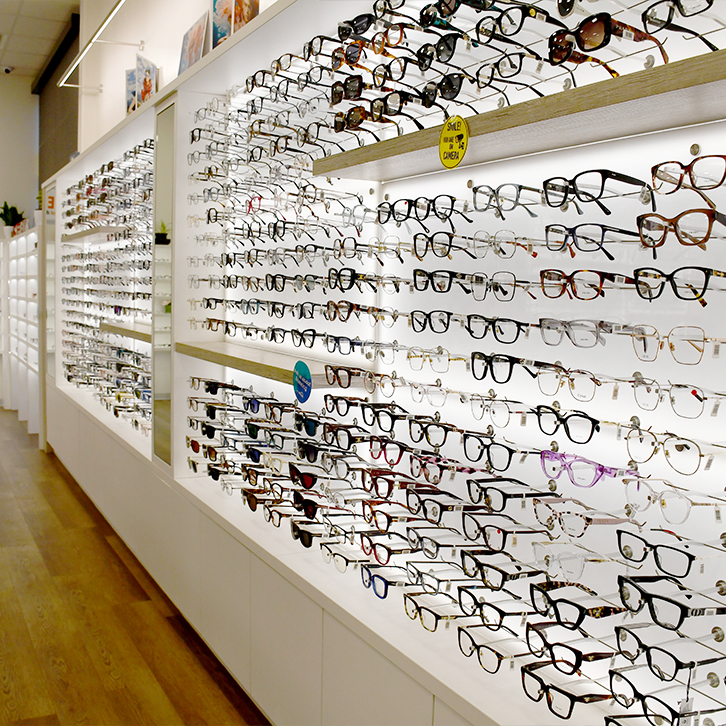Myopia, or nearsightedness, is a common visual condition that is on the rise worldwide. Some estimates suggest that over 50% of the world’s population will have myopia by 2050.
While myopia cannot be cured, it’s essential to manage and control it to prevent worse eye issues from appearing later in life. We’ll dive into some myopia facts and discuss methods to keep myopia under control.
What Is Myopia?
Myopia, or nearsightedness, is a refractive error that occurs when the axial length of the eyeball becomes too long for its optical power. You likely have some degree of myopia if objects in the distance appear blurry, but close-up objects are clear.
Irregular eye shapes cause light to focus incorrectly on the retina, leading to blurry vision. Myopia occurs when the eye’s elongated shape causes light to focus in front of the retina rather than on it. Not sure about the condition of your eye health? A comprehensive eye exam will show you what you need to know.
Your eyes continue to develop until 20 or 21 years of age, so it’s crucial to detect myopia early as it’s not curable, only manageable. If detected in childhood, myopia can be controlled. Several methods of myopia control exist to help set your child up for success.
Myopia Symptoms
Since myopia often appears in children, symptoms can show up while they’re in learning environments. If your child experiences the following symptoms, they may be dealing with myopia:
- Squinting persistently
- Sitting closer to the television or the front of the classroom
- Seeming to be unaware of distant objects
- Blinking excessively
- Rubbing eyes frequently
As children get older, myopia can progress, and other symptoms of myopia include:
- Blurry vision when looking at distant objects
- The need to squint or partially close the eyelids to see clearly
- Headaches caused by eyestrain
- Difficulty seeing while driving a vehicle, especially at night (night myopia)
What Causes Myopia?
Research on myopia development purports that this condition could be genetic. So, if a parent has myopia, it’s likely that their child will too. Additionally, research shows that close-up work on computer screens and smartphones may contribute to myopia emergence as well.
Another study reveals that myopia can be caused by environmental factors, including exposure to sunlight, vitamin D levels, and dopamine levels. The amount of time that children spend outdoors may increase their likelihood of developing myopia. So, send your kids to play in the sunshine to lower their risk of developing myopia.
How Common Is Myopia?
Myopia is a common visual condition around the world, and studies show that it’s on the rise worldwide. Some estimates put the future statistics of the myopic population at around 52% by 2050.
It’s the leading cause of visual impairment among children, and can significantly impact a person’s quality of life. Myopia in children means they may have physical, emotional, and social challenges.
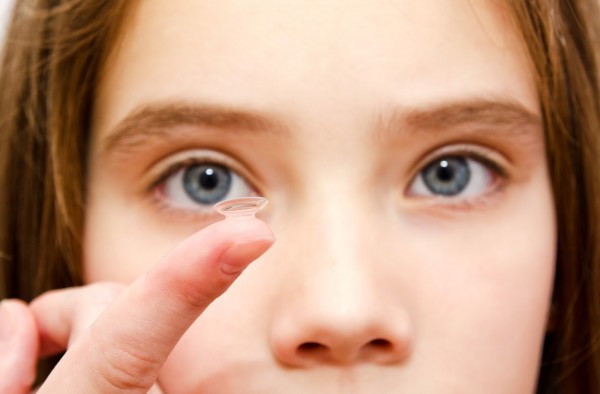
Myopia Management & Control
Myopia is not a curable condition, but there are myriad ways to manage its development and control its effects.
Controlling myopia progression in children can help prevent future visual issues like retinal detachment and glaucoma. If you notice symptoms of myopia in your child, talk to your optometrist about the following control methods.
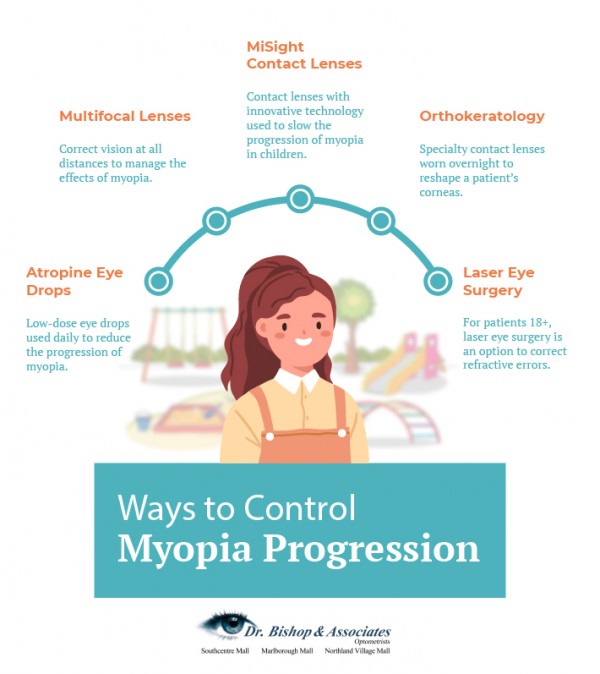
Atropine Eye Drops
Atropine eye drops can be an effective way to reduce myopia progression. Atropine is applied to the eyes once daily to dilate pupils and temporarily interfere with the eye muscles.
Sometimes, atropine is used alongside multifocal lenses. It’s advantageous for children at high risk for developing serious myopia due to the early onset of nearsightedness.
Multifocal Contact Lenses
Multifocal contact lenses let you see clearly at all distances. They employ different corrective powers in different lenses, correcting light as it enters your eye. These lenses can correct your vision from day to day—and they are effective for myopia progression control.
Children as young as 7 are able to wear contacts safely, and they generally tolerate them well. Learn more about contact lenses for myopia control.
MiSight Contact Lenses
MiSight contact lenses can help slow the progression of myopia in children. These soft, single-use lenses provide a comfortable experience and immediate distance vision correction when worn. Additionally, they slow the elongation of the eye using ActivControl technology.
A clinical trial over 3 years concluded that MiSight contact lenses reduced myopia progression by 59%. Children ages 8 to 12 can safely wear these contact lenses to help manage myopia.
Orthokeratology
Orthokeratology (or ortho-k) uses a special kind of rigid gas permeable contact lenses worn overnight. The lenses very gently reshape the corneas, which are malleable, while the patient is sleeping. In the morning, the patient removes the ortho-k lenses and gains clear vision at all distances for the entire day.
While an effective control method, ortho-k is not permanent—the corneas will slowly return to their natural shape over time. So, if a patient ends this method, they will have to rely on glasses or contact lenses for vision correction until they are old enough to undergo laser eye surgery.
Laser Eye Surgery
For adults 18 and over who have progressive myopia, laser eye surgery may be an option. Laser eye surgery can correct refractive errors and eliminate the need for glasses or contact lenses. Talk to your eye doctor to find out if you’re a good candidate for laser eye surgery.
Does Myopia Get Worse With Age?
If myopia continues to develop undiagnosed, the effects will progressively get worse, creating new issues in your vision. Without proper myopia management, you could potentially sustain vision loss, retinal detachment, myopic maculopathy, glaucoma, and cataracts in the future.
Talk to Your Optometrist
Monitor your eye health for symptoms of myopia, and if you notice anything awry, visit us for an eye exam at your earliest convenience. Book an appointment at one of our 4 locations across Calgary.
When it comes to your eyesight, the earlier we diagnose a problem, the better it is for your future vision.

